Interannual Variations in the Summer Coastal Upwelling in the Northeastern South China Sea
Abstract
:1. Introduction
2. Materials and Methods
2.1. Study Area
2.2. Dataset
2.2.1. MODIS SST and CHL Data
2.2.2. ERA5 Wind Field Data
2.2.3. Validity of the Data
2.3. Methodology
2.3.1. Topographic Position Index (TPI)
2.3.2. Theil–Sen Estimation and Mann–Kendall Test
3. Results
3.1. Interannual Variations in Coastal Upwelling
3.2. Relationship between Wind Field and Upwelling
3.3. Predictability of Upwelling Combined with ENSO
4. Discussion
5. Conclusions
Author Contributions
Funding
Data Availability Statement
Acknowledgments
Conflicts of Interest
References
- Hu, J.; Wang, X.H. Progress on upwelling studies in the China seas. Rev. Geophys. 2016, 54, 653–673. [Google Scholar] [CrossRef]
- Shi, W.; Huang, Z.; Hu, J. Using TPI to map spatial and temporal variations of significant coastal upwelling in the northern South China Sea. Remote Sens. 2021, 13, 1065. [Google Scholar] [CrossRef]
- Hsiao, P.-Y.; Shimada, T.; Lan, K.-W.; Lee, M.-A.; Liao, C.-H. Assessing summer time primary production required in changed marine environments in upwelling ecosystems around the Taiwan bank. Remote Sens. 2021, 13, 765. [Google Scholar] [CrossRef]
- Li, D.; Yang, S.; Wei, Y.; Wang, X.; Mao, Y.; Guo, C.; Sun, J. Response of size-fractionated chlorophyll a to upwelling and Kuroshio in northeastern South China Sea. J. Mar. Sci. Eng. 2022, 10, 784. [Google Scholar] [CrossRef]
- Gan, J.; Cheung, A.; Guo, X.; Li, L. Intensified upwelling over a widened shelf in the northeastern South China Sea. J. Geophys. Res. Oceans 2009, 114, C09019. [Google Scholar] [CrossRef]
- Gan, J.; Li, L.; Wang, D.; Guo, X. Interaction of a river plume with coastal upwelling in the northeastern South China Sea. Cont. Shelf Res. 2009, 29, 728–740. [Google Scholar] [CrossRef]
- Jing, Z.; Qi, Y.; Du, Y. Upwelling in the continental shelf of northern South China Sea associated with 1997–1998 El Niño. J. Geophys. Res. Oceans 2011, 116, C02033. [Google Scholar] [CrossRef]
- Shu, Y.; Wang, D.; Zhu, J.; Peng, S. The 4-D structure of upwelling and Pearl River plume in the northern South China Sea during summer 2008 revealed by a data assimilation model. Ocean Model. 2011, 36, 228–241. [Google Scholar] [CrossRef]
- Gu, Y.; Pan, J.; Lin, H. Remote sensing observation and numerical modeling of an upwelling jet in Guangdong coastal water. J. Geophys. Res. Oceans 2012, 117, C08019. [Google Scholar] [CrossRef]
- Wang, D.; Zhuang, W.; Xie, S.-P.; Hu, J.; Shu, Y.; Wu, R. Coastal upwelling in summer 2000 in the northeastern South China Sea. J. Geophys. Res. Oceans 2012, 117, C04009. [Google Scholar] [CrossRef]
- Wang, D.; Shu, Y.; Xue, H.; Hu, J.; Chen, J.; Zhuang, W.; Zu, T.; Xu, J. Relative contributions of local wind and topography to the coastal upwelling intensity in the northern South China Sea. J. Geophys. Res. Oceans 2014, 119, 2550–2567. [Google Scholar] [CrossRef]
- Satar, M.N.; Akhir, M.F.; Zainol, Z.; Chung, J.X. Upwelling in marginal seas and its association with climate change scenario—A comparative review. Climate 2023, 11, 151. [Google Scholar] [CrossRef]
- Liu, F.; Chen, C.; Zhan, H. Decadal variability of chlorophyll a in the South China Sea: A possible mechanism. Chin. J. Oceanol. Limnol. 2012, 30, 1054–1062. [Google Scholar] [CrossRef]
- Xian, T.; Sun, L.; Yang, Y.-J.; Fu, Y.-F. Monsoon and eddy forcing of chlorophyll-a variation in the northeast South China Sea. Int. J. Remote Sens. 2012, 33, 7431–7443. [Google Scholar] [CrossRef]
- Li, J.; Qi, Y.; Jing, Z.; Wang, J. Enhancement of eddy-Ekman pumping inside anticyclonic eddies with wind-parallel extension: Satellite observations and numerical studies in the South China Sea. J. Marine Syst. 2014, 132, 150–161. [Google Scholar] [CrossRef]
- Vaidya, H.N.; Breininger, R.D.; Madrid, M.; Lazarus, S.; Kachouie, N.N. Generalized additive models for predicting sea level rise in coastal Florida. Geosciences 2023, 13, 310. [Google Scholar] [CrossRef]
- Li, S.; Li, Y.; Peng, S.; Qi, Z. The inter-annual variations of the significant wave height in the Western North Pacific and South China Sea region. Clim. Dynam. 2021, 56, 3065–3080. [Google Scholar] [CrossRef]
- Hong, B.; Zhang, J. Long-term trends of sea surface wind in the northern South China Sea under the background of climate change. J. Mar. Sci. Eng. 2021, 9, 752. [Google Scholar] [CrossRef]
- Xie, S.-P.; Kosaka, Y.; Du, Y.; Hu, K.; Chowdary, J.S.; Huang, G. Indo-Western Pacific Ocean capacitor and coherent climate anomalies in post-ENSO summer: A review. Adv. Atmos. Sci. 2016, 33, 411–432. [Google Scholar] [CrossRef]
- Wang, B.; Huang, F.; Wu, Z.; Yang, J.; Fu, X.; Kikuchi, K. Multi-scale climate variability of the South China Sea monsoon: A review. Dynam. Atmos. Oceans 2009, 47, 15–37. [Google Scholar] [CrossRef]
- Praveen, V.; Ajayamohan, R.S.; Valsala, V.; Sandeep, S. Intensification of upwelling along Oman coast in a warming scenario. Geophys. Res. Lett. 2016, 43, 7581–7589. [Google Scholar] [CrossRef]
- Liu, S.; Zuo, J.; Shu, Y.; Ji, Q.; Cai, Y.; Yao, J. The intensified trend of coastal upwelling in the South China Sea during 1982–2020. Front. Mar. Sci. 2023, 10, 1084189. [Google Scholar] [CrossRef]
- Tang, D.; Kawamura, H.; Dien, T.V.; Lee, M. Offshore phytoplankton biomass increase and its oceanographic causes in the South China Sea. Mar. Ecol. Prog. Ser. 2004, 268, 31–41. [Google Scholar] [CrossRef]
- Zhang, C. Responses of summer upwelling to recent climate changes in the Taiwan Strait. Remote Sens. 2021, 13, 1386. [Google Scholar] [CrossRef]
- Ware, D.M.; Thomson, R.E. Link between long-term variability in upwelling and fish production in the northeast Pacific Ocean. Can. J. Fish. Aquat. Sci. 1991, 48, 2296–2306. [Google Scholar] [CrossRef]
- Walton, C.C.; Pichel, W.G.; Sapper, J.F.; May, D.A. The development and operational application of nonlinear algorithms for the measurement of sea surface temperatures with the NOAA polar-orbiting environmental satellites. J. Geophys. Res. Oceans 1998, 103, 27999–28012. [Google Scholar] [CrossRef]
- Dabuleviciene, T.; Kozlov, I.E.; Vaiciute, D.; Dailidiene, I. Remote sensing of coastal upwelling in the south-eastern Baltic Sea: Statistical properties and implications for the coastal environment. Remote Sens. 2018, 10, 1752. [Google Scholar] [CrossRef]
- Strub, P.T.; James, C. Evaluation of nearshore QuikSCAT 4.1 and ERA-5 wind stress and wind stress curl fields over eastern boundary currents. Remote Sens. 2022, 14, 2251. [Google Scholar] [CrossRef]
- Ferreira, S.; Sousa, M.; Picado, A.; Vaz, N.; Dias, J.M. New insights about upwelling trends off the Portuguese coast: An ERA5 dataset analysis. J. Mar. Sci. Eng. 2022, 10, 1849. [Google Scholar] [CrossRef]
- Jiao, D.; Xu, N.; Yang, F.; Xu, K. Evaluation of spatial-temporal variation performance of ERA5 precipitation data in China. Sci. Rep. 2021, 11, 17956. [Google Scholar] [CrossRef] [PubMed]
- Hoffmann, L.; Guenther, G.; Li, D.; Stein, O.; Wu, X.; Griessbach, S.; Heng, Y.; Konopka, P.; Mueller, R.; Vogel, B.; et al. From ERA-Interim to ERA5: The considerable impact of ECMWF’s next-generation reanalysis on Lagrangian transport simulations. Atmos. Chem. Phys. 2019, 19, 3097–3124. [Google Scholar] [CrossRef]
- De Leo, F.; Besio, G.; Briganti, R.; Vanem, E. Non-stationary extreme value analysis of sea states based on linear trends. Analysis of annual maxima series of significant wave height and peak period in the Mediterranean Sea. Coast. Eng. 2021, 167, 103896. [Google Scholar] [CrossRef]
- Vanem, E. Non-stationary extreme value models to account for trends and shifts in the extreme wave climate due to climate change. Appl. Ocean Res. 2015, 52, 201–211. [Google Scholar] [CrossRef]
- Zhao, P.; He, Z. Temperature Change Characteristics in Gansu Province of China. Atmosphere 2022, 13, 728. [Google Scholar] [CrossRef]
- Sun, P.; Xu, B.; Wang, J. Long-term trend analysis and wave energy assessment based on ERA5 wave reanalysis along the Chinese coastline. Appl. Energy 2022, 324, 119709. [Google Scholar] [CrossRef]
- Gocic, M.; Trajkovic, S. Analysis of changes in meteorological variables using Mann-Kendall and Sen’s slope estimator statistical tests in Serbia. Global Planet. Change 2013, 100, 172–182. [Google Scholar] [CrossRef]
- Zhang, Y.; Du, Y.; Feng, M.; Hobday, A.J. Vertical structures of marine heatwaves. Nat. Commun. 2023, 14, 6483. [Google Scholar] [CrossRef] [PubMed]
- Tran, M.D.; Vantrepotte, V.; Loisel, H.; Oliveira, E.N.; Tran, K.T.; Jorge, D.; Mériaux, X.; Paranhos, R. Band ratios combination for estimating chlorophyll-a from Sentinel-2 and Sentinel-3 in coastal waters. Remote Sens. 2023, 15, 1653. [Google Scholar] [CrossRef]
- Muzirafuti, A.; Crupi, A.; Lanza, S.; Barreca, G.; Randazzo, G. Shallow water bathymetry by satellite image: A case study on the coast of San Vito Lo Capo Peninsula, Northwestern Sicily, Italy. In Proceedings of the 2019 IMEKO TC19 International Workshop on Metrology for the Sea: Learning to Measure Sea Health Parameters, MetroSea 2019, Genoa, Italy, 3–5 October 2019; pp. 129–134. [Google Scholar]
- Mélin, F.; Vantrepotte, V. How optically diverse Is the coastal ocean? Remote Sens. Environ. 2015, 160, 235–251. [Google Scholar] [CrossRef]
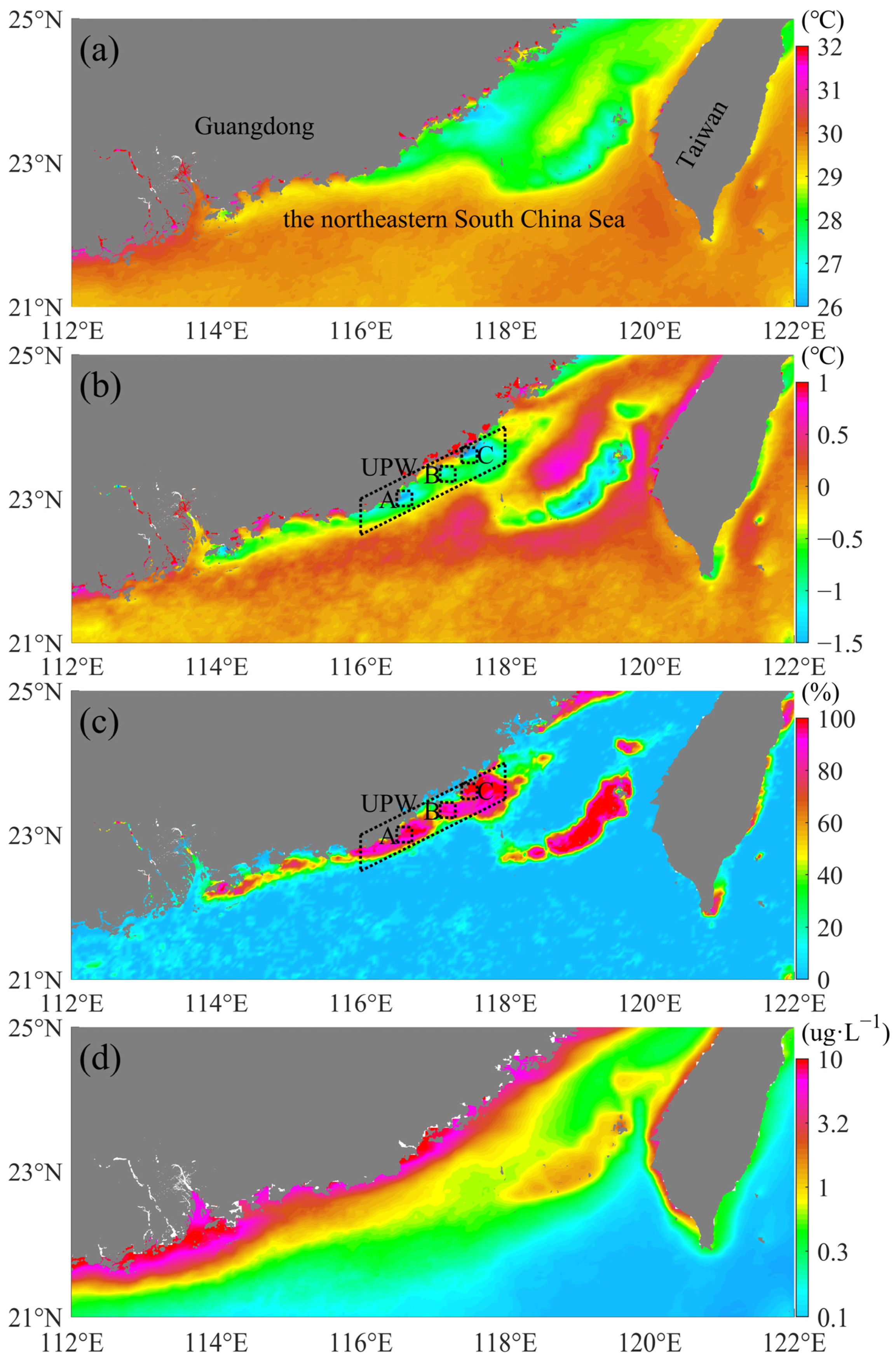
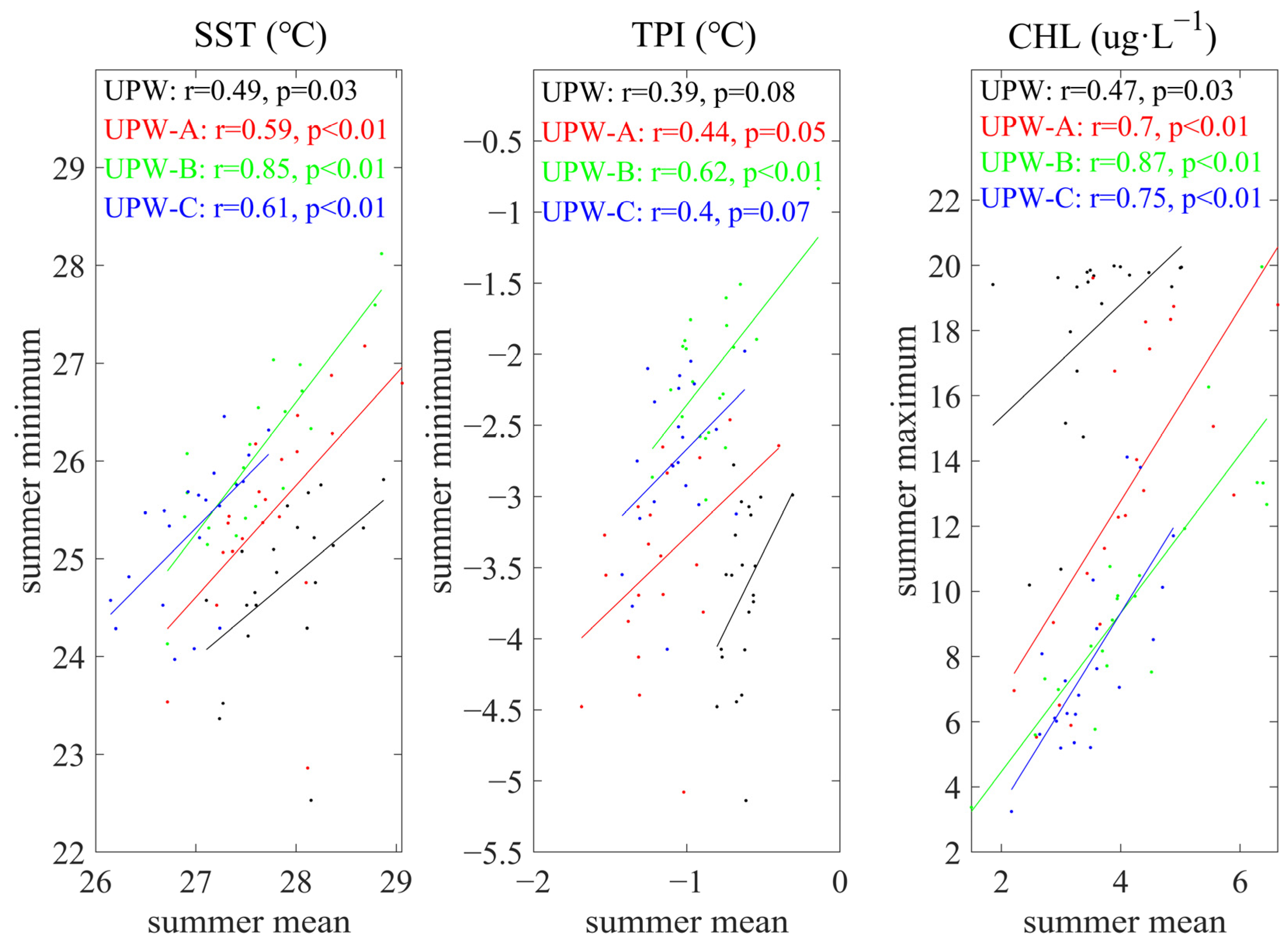
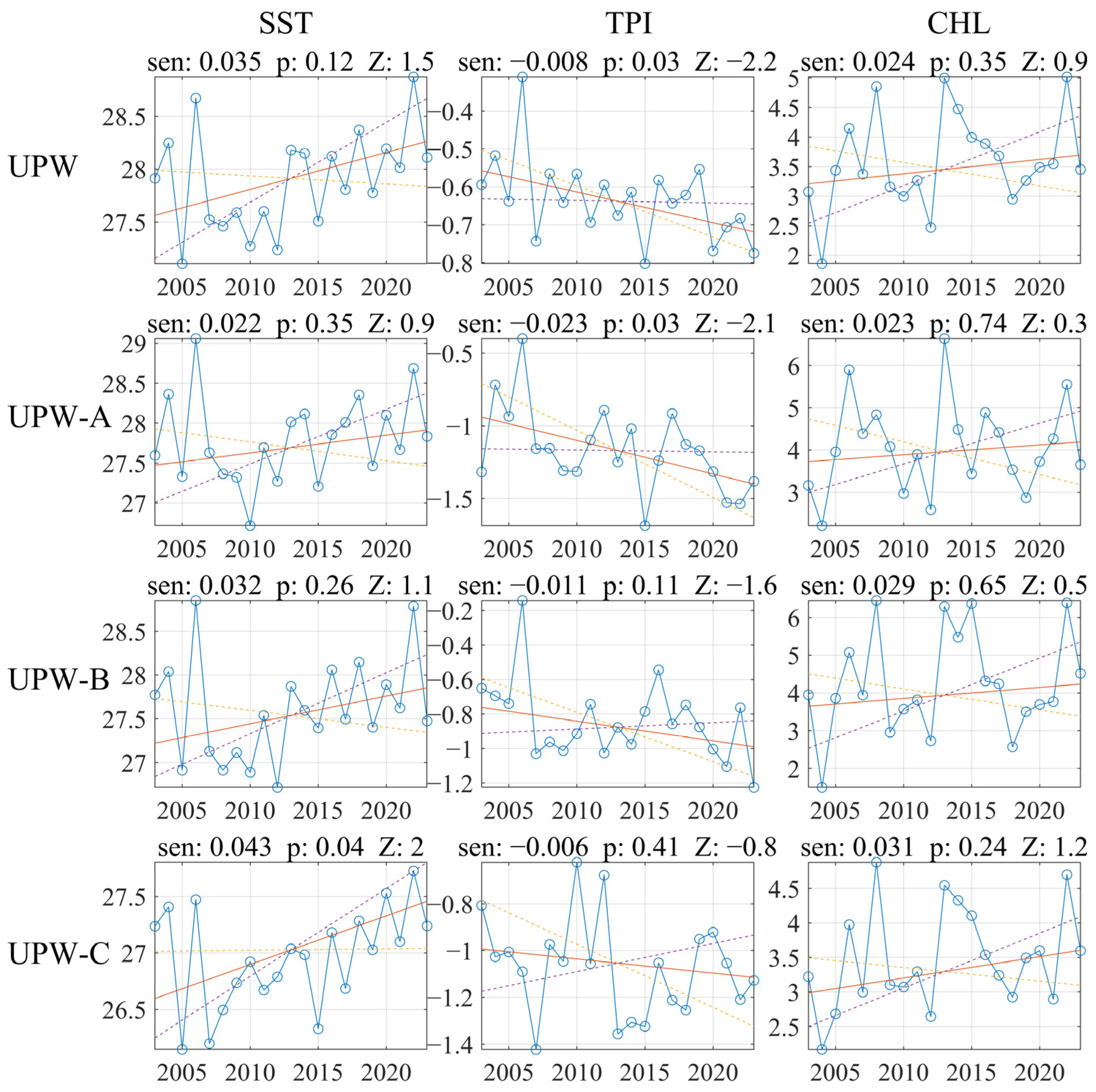

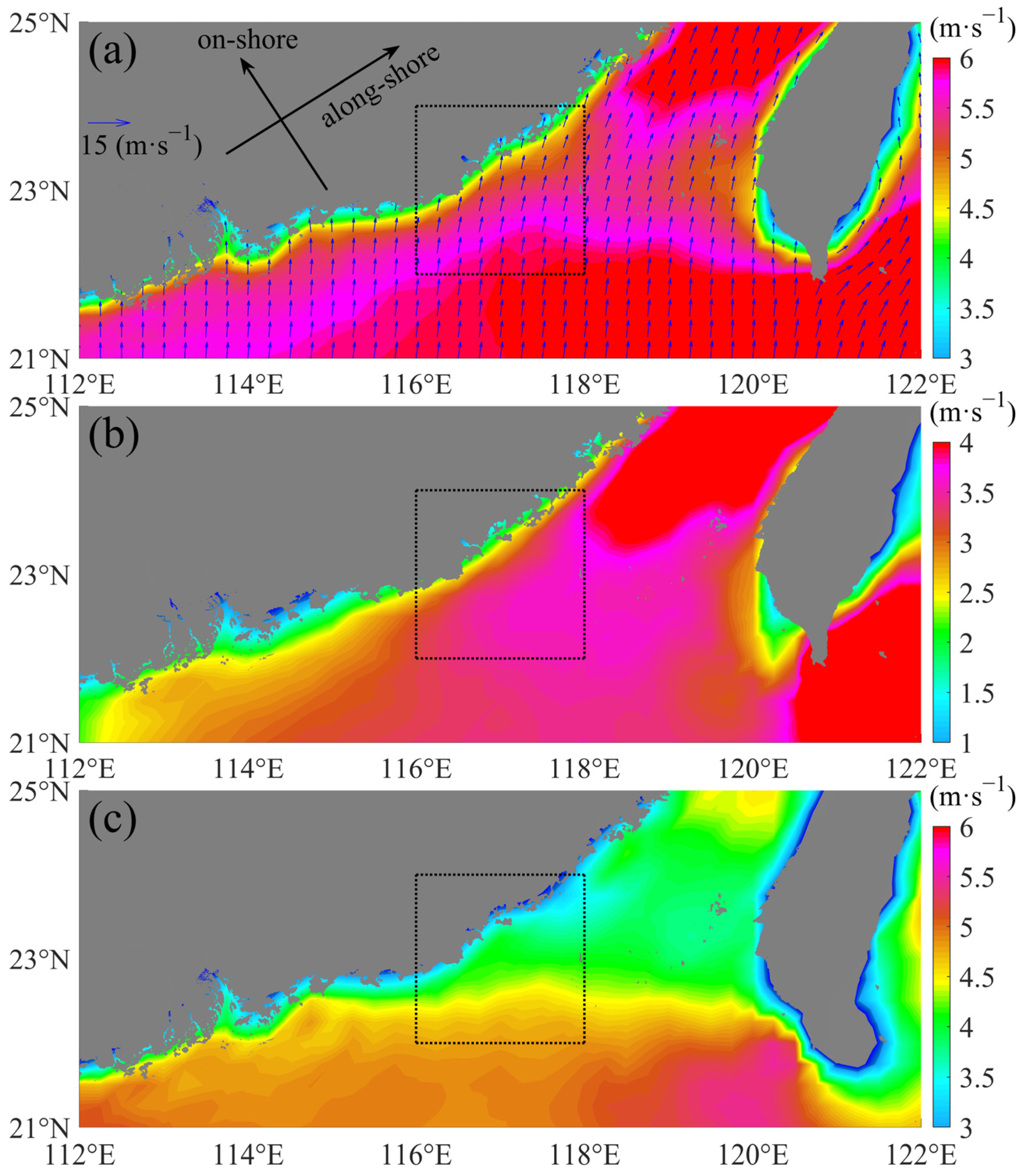
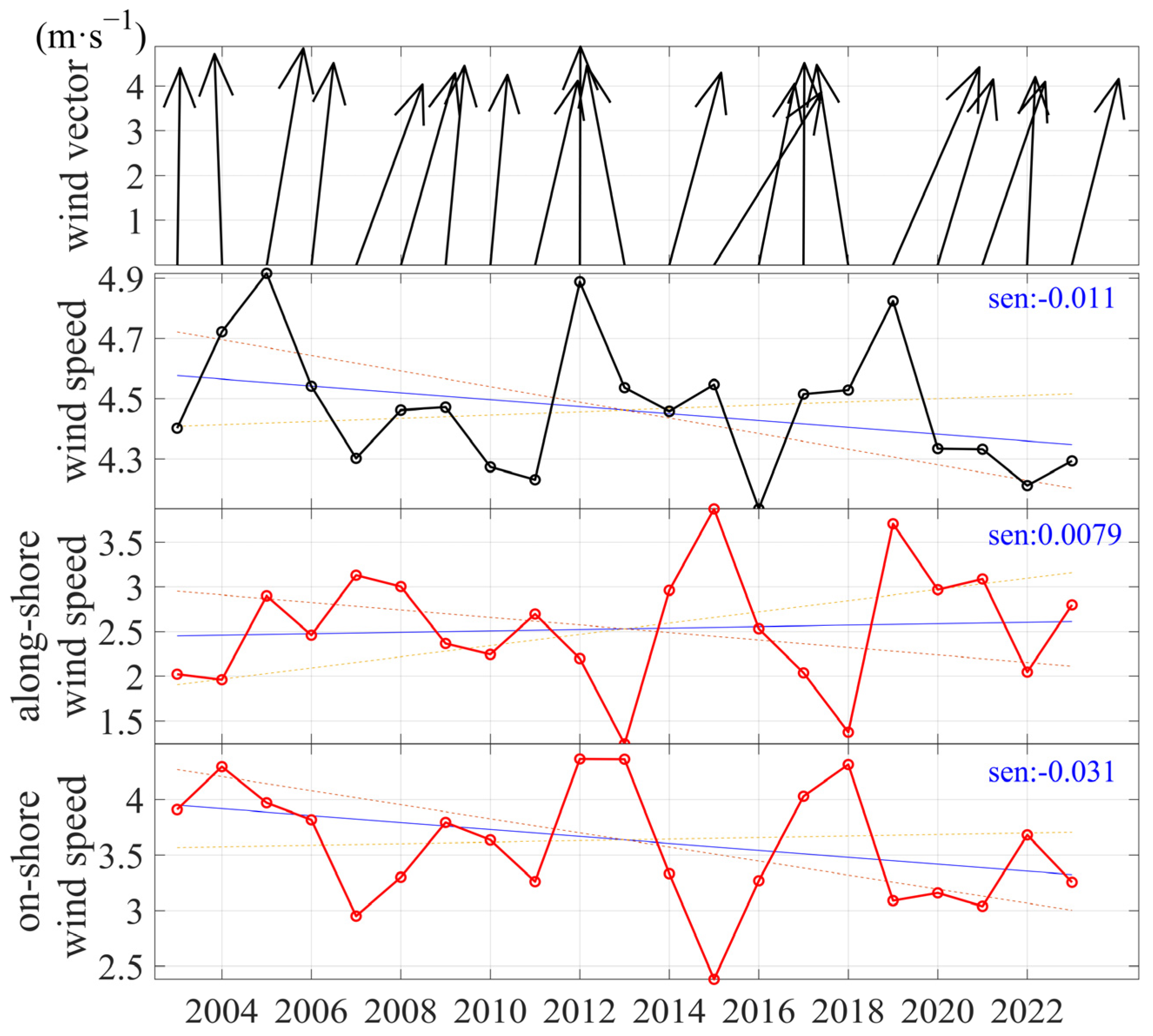
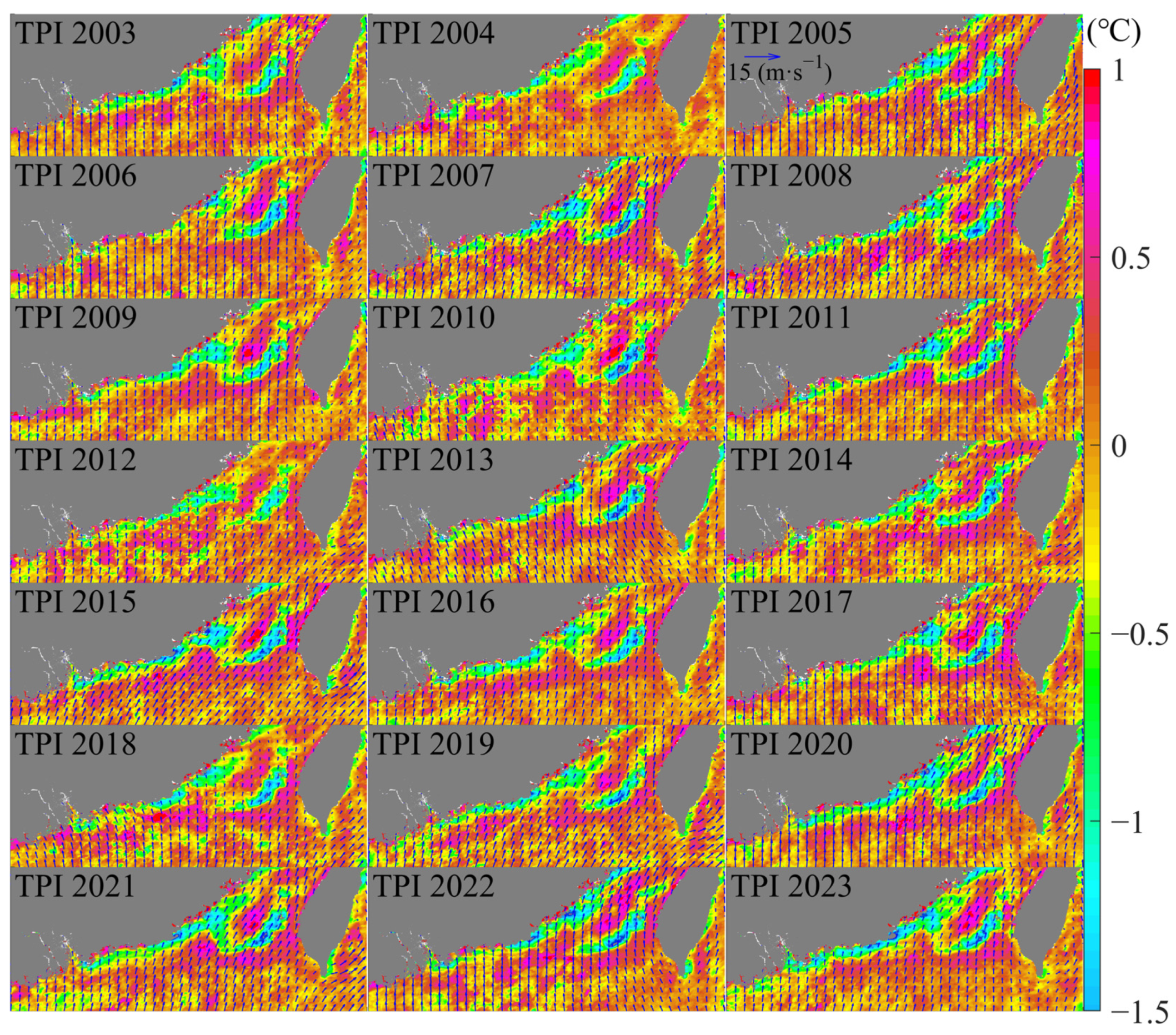


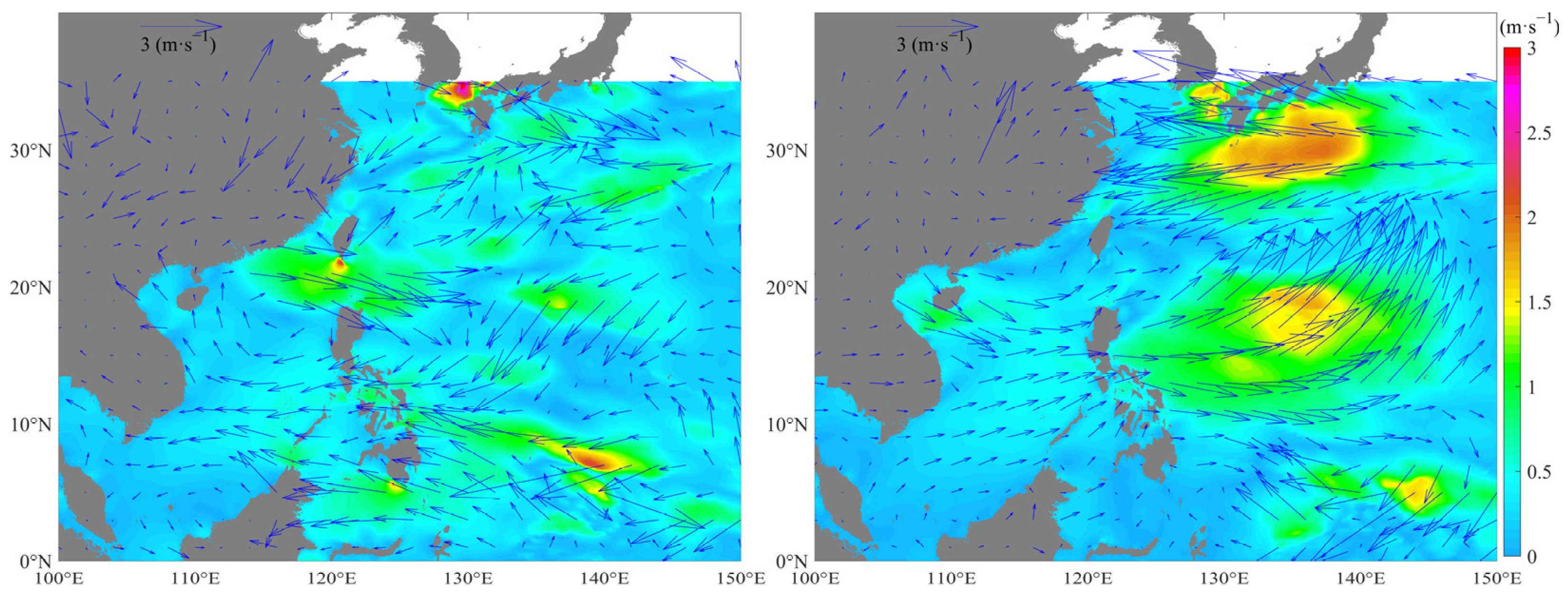
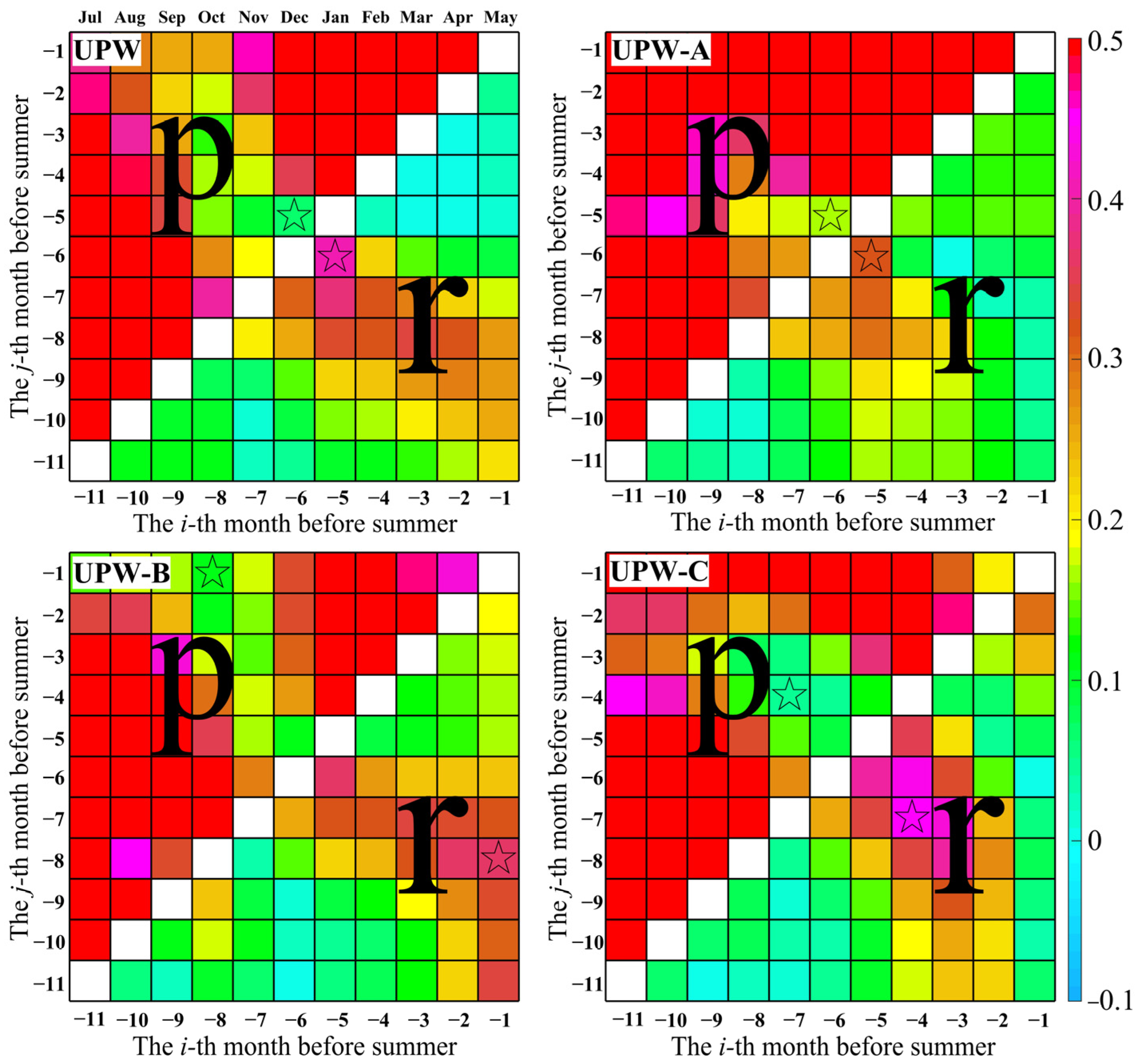
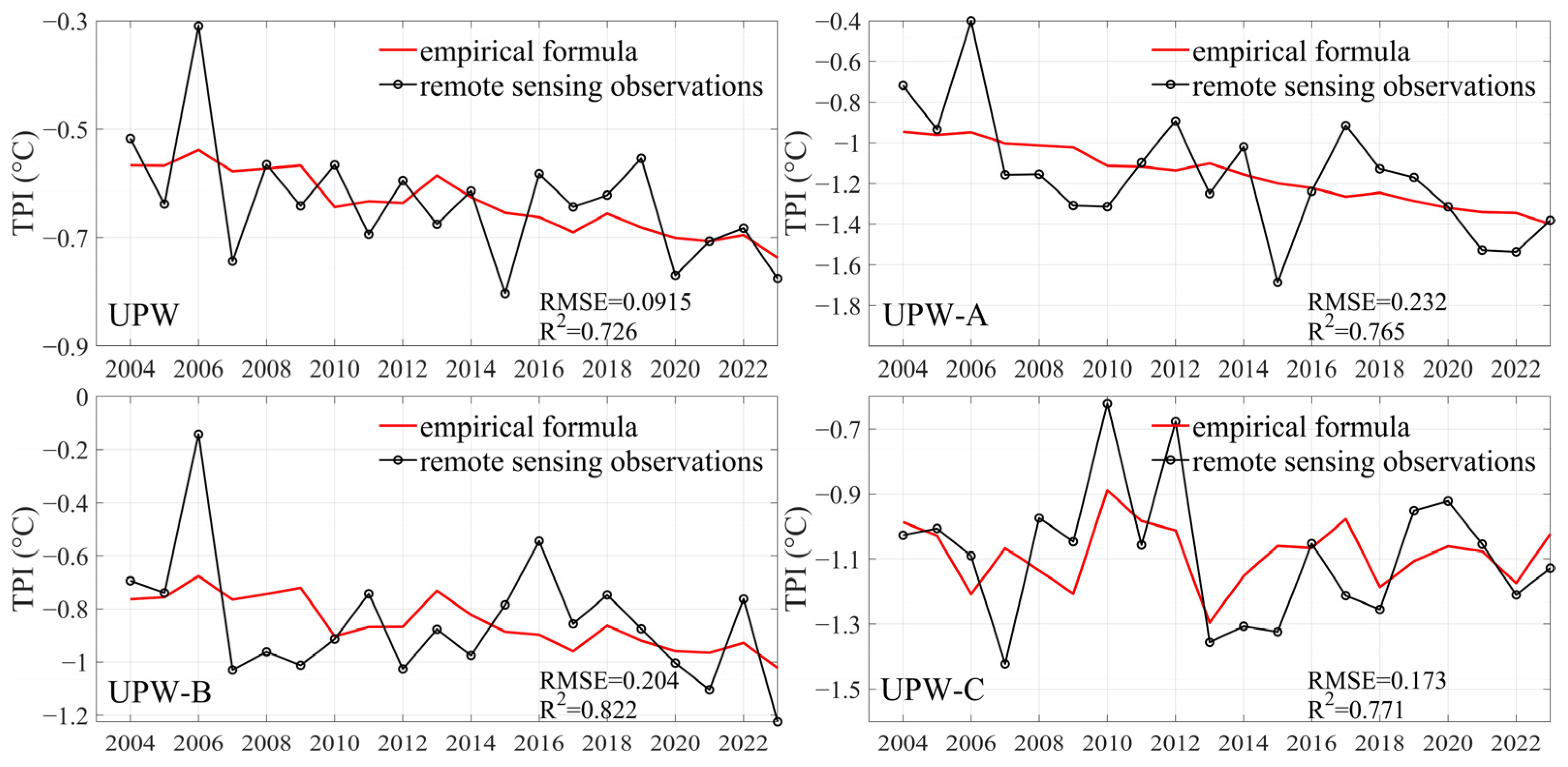
Disclaimer/Publisher’s Note: The statements, opinions and data contained in all publications are solely those of the individual author(s) and contributor(s) and not of MDPI and/or the editor(s). MDPI and/or the editor(s) disclaim responsibility for any injury to people or property resulting from any ideas, methods, instructions or products referred to in the content. |
© 2024 by the authors. Licensee MDPI, Basel, Switzerland. This article is an open access article distributed under the terms and conditions of the Creative Commons Attribution (CC BY) license (https://creativecommons.org/licenses/by/4.0/).
Share and Cite
Chen, W.; Tong, Y.; Li, W.; Ding, Y.; Li, J.; Wang, W.; Shi, P. Interannual Variations in the Summer Coastal Upwelling in the Northeastern South China Sea. Remote Sens. 2024, 16, 1282. https://doi.org/10.3390/rs16071282
Chen W, Tong Y, Li W, Ding Y, Li J, Wang W, Shi P. Interannual Variations in the Summer Coastal Upwelling in the Northeastern South China Sea. Remote Sensing. 2024; 16(7):1282. https://doi.org/10.3390/rs16071282
Chicago/Turabian StyleChen, Wuyang, Yifeng Tong, Wei Li, Yang Ding, Junmin Li, Wenhua Wang, and Ping Shi. 2024. "Interannual Variations in the Summer Coastal Upwelling in the Northeastern South China Sea" Remote Sensing 16, no. 7: 1282. https://doi.org/10.3390/rs16071282





